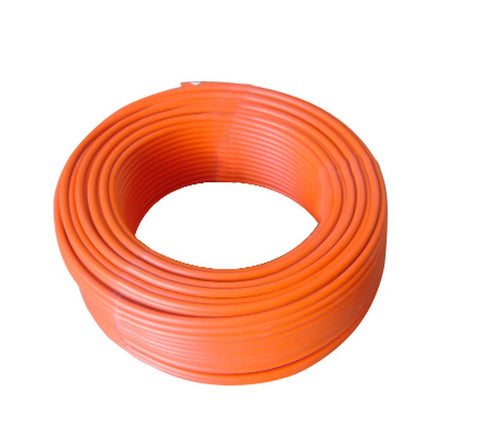Types of Radiant Heating
Zurn Thermal Track System

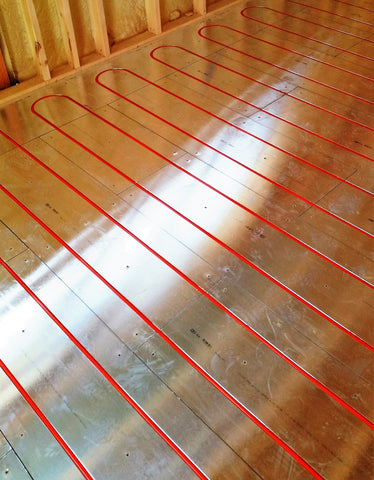
Thermal Track™ is a patent-pending radiant heating system employing a thermally coated composite wood product, factory grooved to accommodate 3/8" nominal American Radiant PEX-AL-PEX tubing. The PEX tubing is tightly secured in the Thermal Track groove, resulting in excellent thermal transfer. Heat is transferred quickly and efficiently to the finished floor goods and the conditioned interior space.
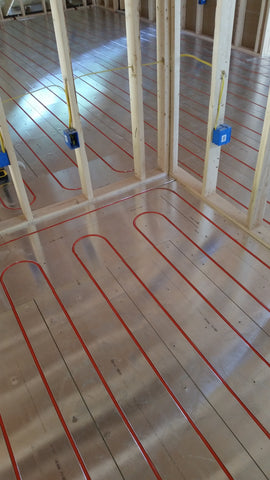

Application
Thermal Track is non-structural and intended for attachment to new or existing plywood subfloors or walls in residential or commercial new construction or retrofit radiant floor applications. Thermal Track may also be used over existing concrete slabs.
Installation
Refer to the Thermal Track Installation Guide, Form No. QFN124 for proper installation on various sub-floors. Thermal Track is usually installed just before the finished flooring. Zurn PEX 3/8" nominal radiant tubing is snapped in place flush with the surface of the Thermal Track.
Ice Melt - Heated Driveways & Walkways
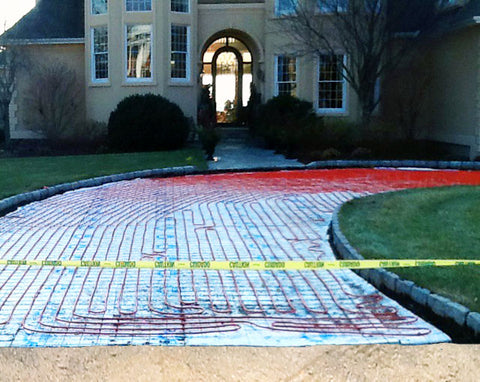

Our snow and ice melting systems are maintenance free and are safe to use year-round on exterior slabs. Ice and snow melting systems may be installed into new concrete slabs or retrofitted into existing slabs. They prevent damage to concrete caused by snow removal equipment and the corrosive nature of snow melting chemicals. They also eliminate the need to plow and shovel, thereby saving a considerable amount of time, hassle and money.
Stapled Down (low mass gypcrete)
The most common options to cover the top the tubing are lightweight concrete, gypsum based lightweight overpour or nailing strips (for nail-down hardwood) with an in-f of gypsum or lightweight concrete. With staple down installations the overall panel height or thickness must be determined in the planning stages. This is to avoid interference with finished door, window and ceiling heights. A fully insulated joist bay beneath is required to reduce backloss and to ensure performance.


Staple-down installations are an excellent way to add radiant heat to a project while still maintaining thermal mass, lower water temperatures, high efficiencies and, again, outstanding comfort.
Staple Up (In Floor Joists)
Under-floor radiant heat is ideal for homeowners that want to take advantage of the clean, even heat of a radiant heat system, but without the additional cost and labor of replacing your entire floors.
Under-floor radiant heat systems are installed underneath the current sub floor between the floor joists. This kind of installation is not as responsive as the aluminum base method but is more responsive than the thermal mass method.
Under-floor radiant heat needs to heat the wood sub-floor and floor covering above so it can radiate heat into your home. This makes it the most unobtrusive radiant heat to install in an existing home. It will not add any additional floor height or disrupt your existing floor coverings.
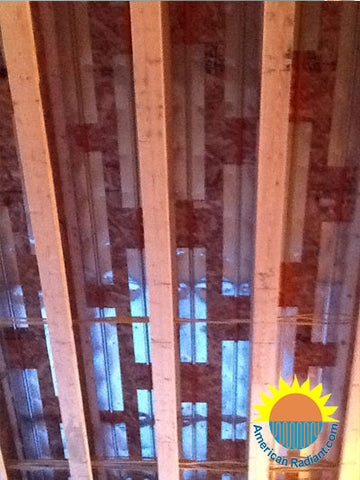

In Concrete Slab

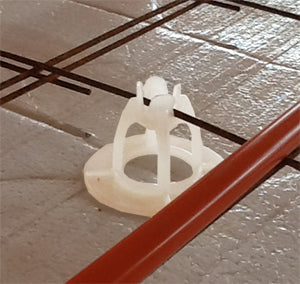
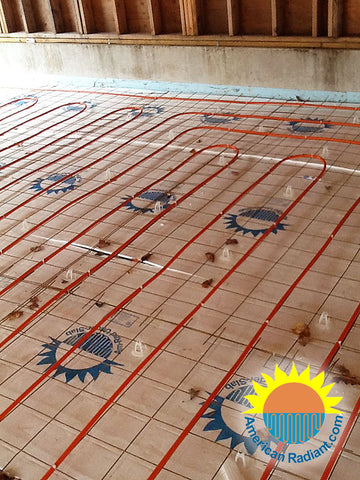 c
cRadiant heating systems in concrete  Heating your home with a forced-air furnace isn't your only option when you have concrete floors. You can save energy and create a healthier, more comfortable living environment by having the floor itself distribute the heat-from the ground up-via a radiant in-floor heating system.
Heating your home with a forced-air furnace isn't your only option when you have concrete floors. You can save energy and create a healthier, more comfortable living environment by having the floor itself distribute the heat-from the ground up-via a radiant in-floor heating system.
The science behind radiant floor heating is quite simple: Tubes that circulate hot water or electrical heating elements are installed in the concrete slab when it's poured, turning the thermal mass of the concrete into an inconspicuous radiator of warm, even heat. Among the many benefits: Your feet are always toasty warm, the temperature is consistent and easy to control, you won't feel the drafts or hear the noise of blowing air, and no dust or allergens get circulated within your home through air vents. Best of all, you'll typically pay lower utility costs than with a forced-air system, because concrete floor radiant heating consumes less energy to achieve the same level of comfort.




